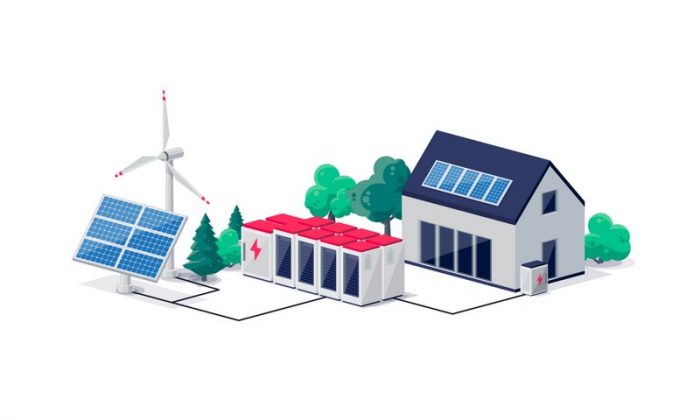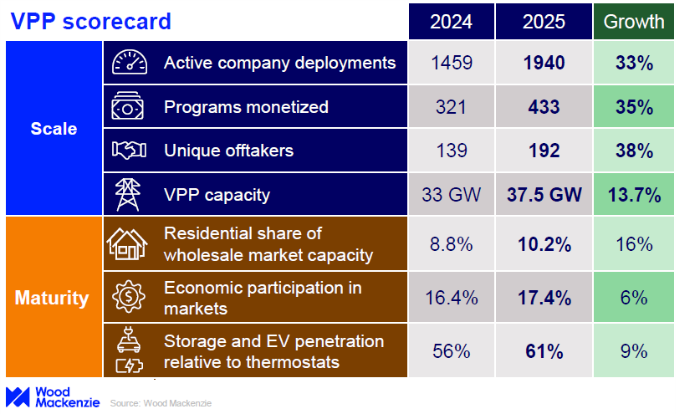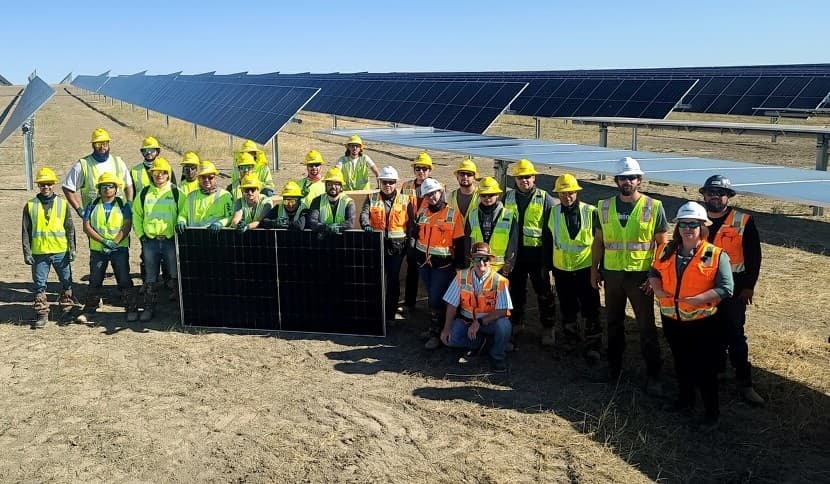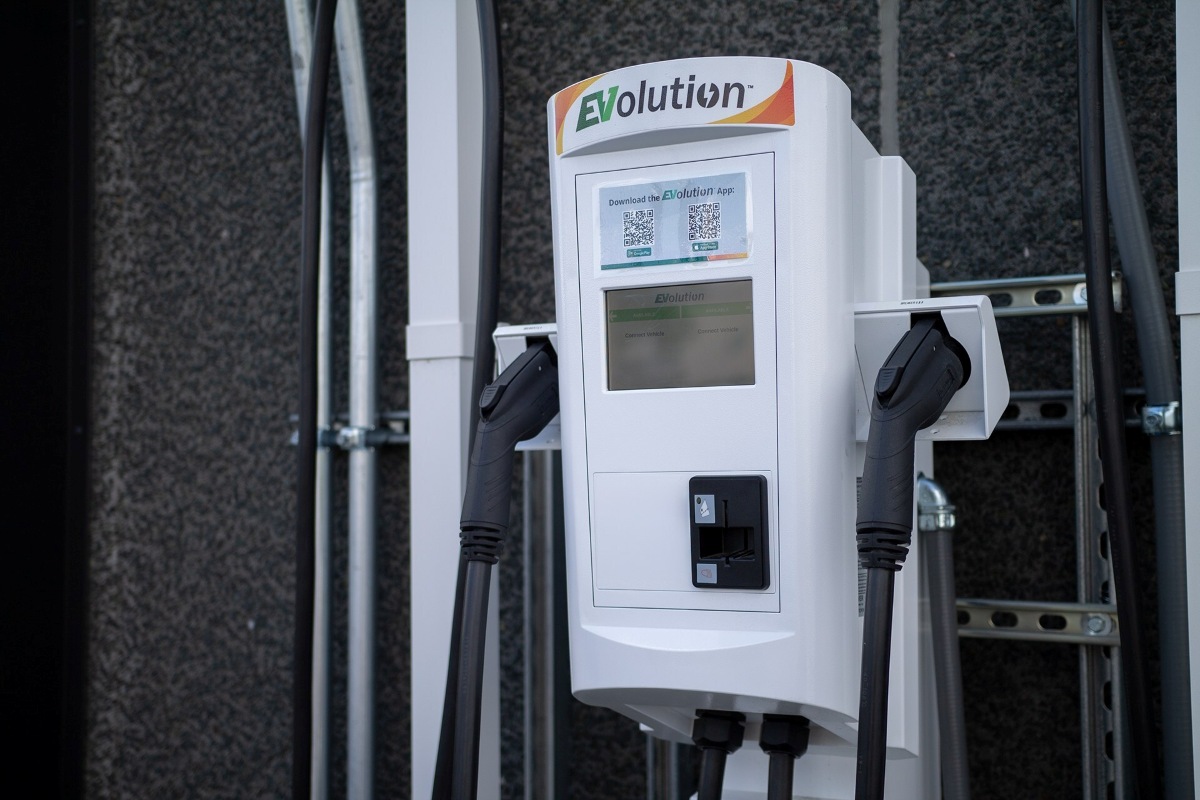Virtual power plant market hits 37.5 GW as deployments surge, but barriers cap growth
Wood Mackenzie finds VPP deployments, offtakers, and monetized programs each grew by more than 33% year-over-year, even as total capacity rose a modest 13.7% due to utility and regulatory constraints

The virtual power plant (VPP) market added 4.5 GW of new capacity in the past year, bringing the global total to 37.5 GW of behind-the-meter flexible resources, according to Wood Mackenzie’s new 2025 North America virtual power plant market report. While that represents a 13.7% year-over-year capacity increase, market participation is expanding far faster: company deployments, unique offtakers, and programs monetized each climbed more than 33%.
“Utility program caps, capacity accreditation reforms, and market barriers have prevented capacity from growing as fast as market activity,” said Ben Hertz-Shargel, global head of grid edge for Wood Mackenzie.

VPP participation widens, but small customers still blocked
Residential customers now account for 10.2% of wholesale VPP capacity, up from 8.8% in 2024. Still, the report notes persistent barriers: third-party data access for enrollment and market settlement continue to block broader small-customer participation.
Technology mixes are shifting as well. Battery storage and EV assets are now included in 61% as many deployments as those with smart thermostats, eroding the dominance of the original incumbent technology.
States and markets driving adoption
California, Texas, New York, and Massachusetts lead the way, representing 37% of deployments. Regional grid operators PJM and ERCOT — both contending with heavy new data center load — also reported the largest disclosed VPP offtake capacity.
“While data centers are the source of new load, there’s an enormous opportunity to tap VPPs as the new source of grid flexibility,” Hertz-Shargel said.
Offtake expands, new business models emerge
The 25 largest VPP offtakers each procured more than 100 MW this year, while over half expanded their deployment count by at least 30%. Wood Mackenzie points to the rise of an “independent distributed power producer” model, in which energy arbitrage and grid services revenue finance third-party-owned storage tied to retail electricity sales.
Regulatory pushback ahead
Despite this activity, the regulatory landscape remains unsettled. Most VPP aggregators and software providers oppose utilities rate-basing distributed energy resources under the Distributed Capacity Procurement model, viewing it as a way to crowd out private capital and aggregators.
“Meanwhile, there is broad consensus among experienced wholesale market participants that FERC Order 2222 was a missed opportunity and will not have a significant impact on market access,” Hertz-Shargel added.





Comments are closed here.